Alvin
Ailey
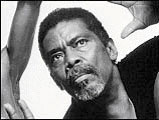
Alvin Ailey's dancing career started in 1949 when
a high school friend, Carmen DeLavallade, introduced him to Lester
Horton, his first dance instructor at the Lester Horton Dance
Theater. In 1958 Ailey assembled his own dance company, the Alvin
Ailey American Dance Theater. Ailey himself stopped dancing in
1965 and cut back on his choreographic assignments during the
1970s in order to seek more funding for his growing dance enterprise.
The company toured the United States and the world so extensively
that by 1989, the year that Ailey died, they had performed for
an estimated 15 million people in 48 states and 45 countries in
six continents. Two of the most significant awards Ailey received
for his achievements in dance included the National Association
for the Advancement of Colored People's prestigious Spingarn medal
(1976) and the Samuel H. Scripps American Dance Festival Award
(1987).
Source: http://www.africana.com
W. E. B. DuBois
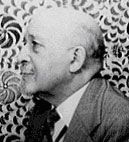
W. E. B. Dubois was born on February 23, 1868 in Great Barrington,
Massachusetts. He was one of the most influential black leaders
of the first half of the 20th Century. Dubois co-founded the National
Association for the Advancement of Colored People, or NAACP, in
1909. Dubois was the first African American to receive a Ph.D.
from Harvard University in 1896. Between 1897 and 1914 Dubois
conducted numerous studies of black society in America, publishing
16 research papers. He organized the first four Pan-African Congresses
(1919-1927), and presided over the fifth. A prolific writer capable
of expressing himself in many disciplines, DuBois, among other
works, wrote a sociological study of blacks in Philadelphia (1899),
historical books on abolitionist John Brown (1909) and on Reconstruction
(1935), and fictional novels such as Quest of the Silver Fleece,
(1911).
Heddye Ducree
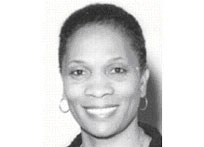
Heddye Brinson Ducree served as the Director of the Carl A. Fields
Center for Equality and Cultural Understanding from 1994 to 2003.
She worked as part of a larger institutional team that has as
its purpose support of multiculturalism in student and University
life and enhancement of the collegiate experience of students
of color. Her strength and determination inspired students and
administrators alike. Heddye led students in demanding greater
resources for ethnic studies at Princeton University, spoke openly
on the culture of Eating Clubs, and personally fought for students
facing discrimination on campus. The Association of Black Princeton
Alumni recognized Ms. Ducree with the Dr. Carl A. Fields Memorial
University Service Award in 1999. Additionally, the Minority Business
Association of Princeton University awarded Ms. Ducree the 2003
Whitney M. Young Pinnacle Award.
"Just as the world looks to Princeton for its intellectual
leadership, it should also be precedent-setting in its relationships,
policies and procedures that make for a campus and college community
that is truly hospitable to all.”
-Heddye Ducree
Duke Ellington
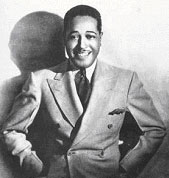
Edward Kennedy Ellington was born into the world on April 29,
1899 in Washington, D.C. Duke was taken under the wings of Oliver
"Doc" Perry and Louis Brown, who taught Duke how to
read music and helped improve his overall piano playing skills.
Three months shy of High School graduation, Duke dropped out of
school and began his professional music career. In 1923, Ellington
left the security that Washington offered him and moved to New
York. Duke’s band became the most sought-after band in the
United States and even throughout the world. Some of Ellington’s
greatest works include "Rockin’ in Rhythm," "Satin
Doll," "New Orleans," "A Drum is a Women,"
"Take the 'A' Train," "Happy-Go-Lucky Local,"
"The Mooche," and "Crescendo in Blue." Duke
Ellington and his band went on to play everywhere from New York
to New Delhi, Chicago to Cairo, and Los Angeles to London. Ellington
and his band played with such greats as Miles Davis, Cab Calloway,
Dizzy Gillespie, Ella Fitzgerald, Tony Bennett and Louis Armstrong.
Source: http://www.dukeellington.com
Lorraine Hansberry
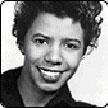
In 1959, Lorraine Vivian Hansberry, became the first black woman
to have a play produced on Broadway with A Raisin in the Sun.
A drama about the dreams of a black family for a better life,
it won the New York Drama Critics Circle Award for the 1959 season,
and was subsequently made into a film (1961) and a musical (1973).
Hansberry's only other completed play is The Sign in Sidney Brustein's
Window (1964). Les Blancs (1970), adapted by Hansberry's husband
Robert Nemiroff after her death, is one of the first major plays
to deal with black liberation. Nemiroff also compiled Hansberry's
writings in To Be Young, Gifted, and Black (1969). Deeply committed
to the black struggle for human rights, Hansberry was nevertheless
not a militant writer, a stance that distinguishes her work from
the plays of black writers of the 1960s.
Source: http://www.cwrl.utexas.edu
Zora Neale
Hurston

On January 7, 1891, Zora Neale Hurston was born in the tiny town
of Notasulga, Alabama. Her father John was a carpenter, sharecropper,
and a Baptist preacher; and her mother Lucy, a former schoolteacher.
Within a year of Zora's birth, the family moved to Eatonville,
Florida; a town, which held historical significance as the first,
incorporated Black municipality in the United States. In 1925,
Hurston headed to New York, just as the Harlem Renaissance was
at its crest. She enrolled in Barnard College to study under Franz
Boas, the father of anthropology. The 1930's and early 1940's
marked the peak of Hurston's literary career. It was during this
time that she completed graduate work at Columbia, published four
novels and an autobiography, and was awarded a Guggenheim Fellowship.
Her writing brought her to the Caribbean where she became so intrigued
by the practice of voodoo that she began incorporating these supernatural
elements into her novels and stories.
Jam Master
Jay

For close to 20 years, Jam Master Jay (Jason Mizell), Run (Joseph
Simmons) and DMC (Darryl McDaniels) have been touching the lives
of many as the group Run DMC. Their b-boy style introduced Hip
Hop to the world with classic songs such as "Rock Box,"
"King of Rock" and "Walk This Way." Jam Master
Jay’s scratching and mixing exhibitions on songs such as
"Jam Master Jay," "Sucker MCs" and "Peter
Piper" were influential on future Hip Hop discjockeys. Outside
of the group, Jay mentored several other artists, signing Onyx
to his JMJ Records imprint and helping to produce their multi-platinum
debut, 1993's Bacdaf--up. Years later, Jay wouldn't have to travel
out of his native borough of Queens to discover another act who
would go on to sell millions of records — 50 Cent spent
time under Jay's wing, at one point recording 36 songs in 18 days,
before eventually making the move to the Trackmasters' camp and
subsequently landing in the Shady/Aftermath Records fold. Jay
Master Jay’s life was tragically cut short in October 2002,
however his legacy lives on with his foundation dedicated to providing
music education in public schools.
Patti LaBelle

Patti Labelle was in Philadelphia, Pennsylvania on May 24th, 1944.
She discovered a gift for music in her church choir and soared
up from that point. Patti Labelle & the Bluebells had a number
of big hits, and Labelle created one of the anthems of the disco
era with "Lady Marmalade.” LaBelle began her solo career
in the late 1970s. She found a comfortable mix of her dance and
pop leanings, and translated it into monstrous success yet again.
She has been nominated for eight Grammys and has been called the
hardest working woman in show business, and recently won a battle
with cancer. LaBelle’s accomplishments transcend music and
include a flourishing acting career and mastership at the culinary
arts.
Jacob Lawrence

Born on Sept. 17, 1917 in Atlantic City, N.J., Lawrence was the
first African-American artist to exhibit in a mainstream New York
gallery. In 1941, at the age of 24, he created a sensation with
an exhibit of his "Migration of the American Negro"
series, depicting the flight of African Americans from the South.
It became the first work by a black artist to be part of the collection
at the Museum of Modern Art. By the age of 30, Time magazine rated
him "the foremost black artist in the United States."
His work, usually in a narrative series of small paintings, explored
racism in America, intermarriage, discrimination in public schools,
and the progress of the civil rights movement.
Paul Robeson
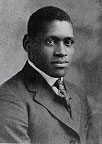
Born in 1898, he was a Phi Beta Kappa and Valedictorian of the
graduating class at Rutgers University. He became a lawyer, writer,
orator, musicologist and fluent in several languages. As a film
star, he appeared in 13 features, including Emperor Jones, Proud
Valley, Song of Freedom and Showboat. Robeson’s acting career
also included work on Broadway. As a singer, Paul Robeson recorded
dozens of albums. His concert tours spanned four decades and carried
him to every continent. In addition to his great achievements,
Paul Robeson was also an eloquent and outspoken champion for his
race, expressing pride, vision and determination that moved multitudes
of people. In every aspect of his extraordinary life, he dedicated
himself to struggles and causes, never compromising, even when
he fought those who would restrict his freedom of speech and political
opinions.
Source: http://www.centralstate.edu
Arthur A.
Schomburg
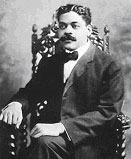
Arthur Alfonso Schomburg, a self-described "Afroborinqueño"
(Black Puerto Rican), was born January 24, 1874, of María
Josefa and Carlos Féderico Schomburg. They lived in Puerto
Rico, in a community now known as Santurce. Schomburg immigrated
to New York on April 17, 1891, where he was active in the decolonization
movement, and where he began amassing the materials needed to
further untangle the African thread of history in the fabric of
the Americas. In 1911 Schomburg co-founded the Negro Society for
Historical Research, an archival institute that published several
important papers on Black history. The keystone of Schomburg's
legacy was the world-renowned collection he had built over the
years. Comprising thousands of slave narratives, manuscripts,
rare books, journals, artwork and other remnants of African history,
his collection was presented to the New York Public Library's
Division of Negro History in 1926 through a $10,000 grant from
the Carnegie Foundation. Schomburg eventually curated his own
collection, now renamed the Schomburg Center for Research in Black
Culture.
John Singleton
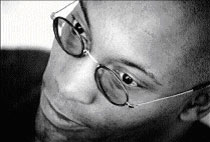
Born January 6, 1968, in the South Central L.A. neighborhood he
would later immortalize on celluloid, Singleton was the son of
a mortgage broker father and a company sales executive mother.
Raised jointly by his divorced parents, he went on to attend the
University of Southern California, where he majored in film writing.
While a student at U.S.C., Singleton won a number of writing awards
that led to a deal with the Creative Artists Agency during his
sophomore year. At the age of 23, he wrote and directed Boyz N’
the Hood, a coming-of-age drama that centered on an intelligent
17-year-old's efforts to make it out of his neighborhood alive.
The film was a major critical and commercial triumph. One of the
highest-grossing films in history to have been directed by an
African American, Boyz N’ the Hood also made history with
its twin Best Screenplay and Best Director Oscar nominations for
its young writer/director. In addition to those nominations, Singleton
was also honored with the New York Film Critics Circle Award for
Best First-Time Director. Singleton has also directed acclaimed
films, Poetic Justice, Higher Learning, Rosewood, Shaft and Baby
Boy.
Bessie Smith

Bessie Smith, the "Empress of the Blues" as she was
called at the time, was a powerful, strong-willed woman who made
her mark in history through singing the blues in the 1920’s
and 30’s. Her professional career began in 1912 when her
brother Clarence arranged an audition with Moses Stokes’
travelling show, with which Clarence had been working since 1904.
In that show she met Ma Rainey, generally considered the first
woman blues singer. Ma Rainey became Bessie’s mentor. The
major breakthrough for Bessie, and for the recording industry,
came in 1923. Mamie Smith in 1920 had recorded "Crazy Blues"
in 1920, which sold so well (against all expectations) that Columbia
set up a separate division for "race" records. Frank
Walker, in charge of the division, had been so impressed years
earlier by Bessie’s singing, that he sent the pianist Clarence
Williams to bring her to New York .As she arrived, Columbia was
on the verge of bankruptcy. Her debut record, "Downhearted
Blues" and "Gulf Coast Blues" , sold 780,000 copies
in the six months after she recorded the pieces, and helped save
Columbia. Over the years she made 160 recordings. |

